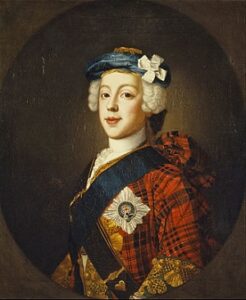
I’ve written about the history of conflict between England and Scotland in several other posts, but if you’re coming to this material without having read those a bit of background is in order. Scotland and England fought each other for centuries, but it looked as though things were settled in 1603, when Queen Elizabeth I died and left no children, naming the king of Scotland, her cousin James Stuart, as her heir. He became James I of England and in theory united the countries. (He is perhaps most famous for commissioning the King James Bible.)
Alas, relations between the two countries did not remain peaceful. A big bone of contention was religion, even though both countries were Protestant. Charles I, James’ son, riled the Scots by his determination to control Scottish church government. England was also determined not to go back to the Roman Catholic church. In 1688 James II, who was James I’s grandson, was kicked off the throne over this very issue. He had converted to Roman Catholicism before becoming king, and his second wife was French and Catholic. But his first wife had been Protestant and English and his two daughters from that marriage had been raised Anglican. So the English kept their fingers crossed that he wouldn’t have any sons from this second wife. A male heir would automatically take his place at the front of the succession line, but James was 51 when he became king and his wife had a long history of miscarriages and stillbirths. So what could possibly go wrong? Well, as it turned out, a lot. James’ wife did indeed finally produce a surviving son, and a Catholic dynasty seemed in the offing. England rose up against him and offered the throne to Mary of Orange, the eldest daughter of James’ first marriage, and her husband William. (“Orange” is a region in The Netherlands.)
